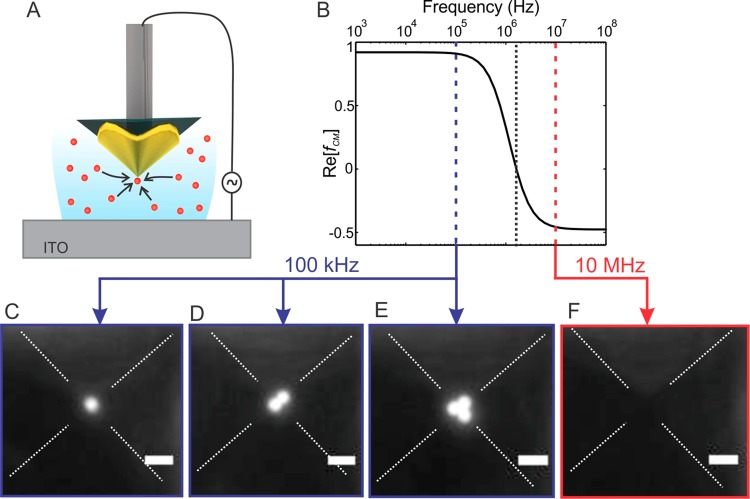Figure 3.
Reversible dielectrophoretic manipulation of fluorescently labeled polystyrene beads. (A) Illustration of dielectrophoretic trapping of particles suspended in water at the apex of the gold pyramidal tip. (B) Real part of fCM(ω) for polystyrene bead in water (conductivity of the mixed solution = 0.28 mS/m) plotted as a function of frequency. The dotted line near 1.67 MHz is the transition from positive to negative DEP. (C–E) Fluorescence snapshots of dielectrophoretic manipulation of labeled polystyrene beads (2 μm) suspended in water using the template-stripped gold pyramidal tip. The applied potential was fixed at 10 Vpp. (C–E) 100 kHz (trapping, positive DEP), and (F) 10 MHz (releasing, negative DEP). The scale bar is 5 μm.

